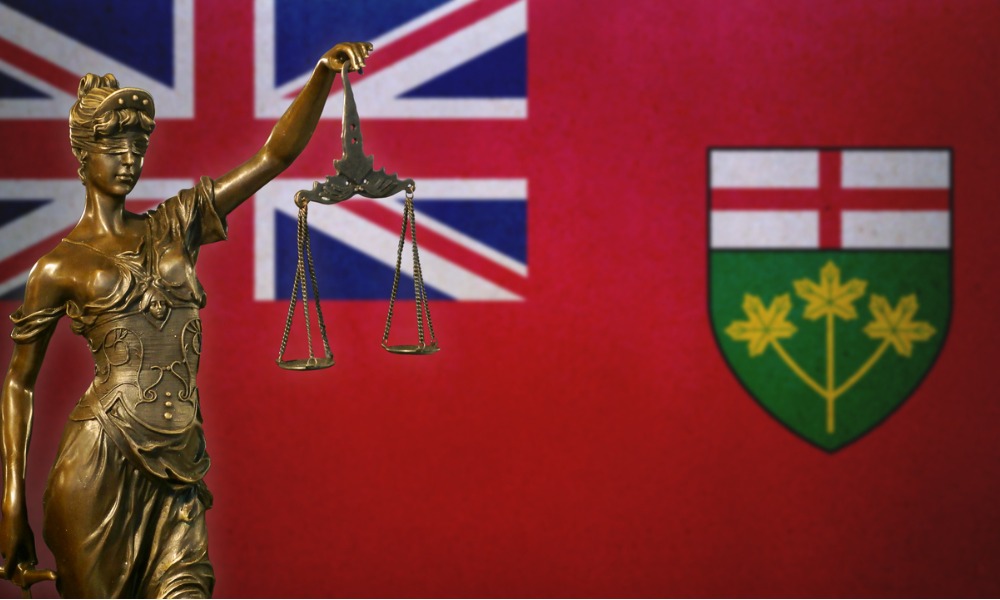A recent Ontario court decision testing the province’s Environmental Protection Act could have consequences for the polluter pays principle, lawyers say.

A recent Ontario court decision testing the province’s Environmental Protection Act could have consequences for the polluter pays principle, lawyers say.
In Hamilton Beach Brands Canada Inc. v. Ministry of the Environment and Climate Change, 2018 ONSC 5010, Ontario’s Divisional Court ruled that the current occupants of a property can be responsible for delineation when existing pollution spreads beyond the geographic area that they occupy.
Hamilton Beach has asked the Ontario Court of Appeal for leave to appeal the decision.
In Hamilton Beach, a former company, Proctor Silex, polluted the site between 1962 and 1973, while Hamilton Beach took over occupancy of the site as a tenant years later without knowledge of the contamination, which had migrated off-site. The ministry ordered Hamilton Beach as the site tenant, as well as the site owner and two previous owners, to delineate that off-site contamination.
Clifford Cole, a partner with Gowling WLG in Toronto, who represented Hamilton Beach in the case at the Divisional Court, says it’s a fundamentally important case that has not been considered before.
“It goes very much to the heart of the environmental regime here in Ontario,” Cole says.
“It’s of fundamental importance because it speaks to a whole range of social and economic issues, all in the context of environmental protection.”
Cole and co-counsel Natalie Mullins say the key issue is the responsibility of a person who is not at fault to address historic off-site contamination they did not cause or permit.
They are also concerned that the decision undermines the purpose of the “brownfields” regime, which is to encourage the revitalization of underutilized contaminated lands and provide property owners with certain protections from environmental liability.
“We feel that the brownfield protection is undermined as a result of the decisions of the Environmental Review Tribunal and the Divisional Court,” says Cole, adding that it implies that a s. 18 order to address historic off-site contamination can be issued against an owner or tenant even where a record of site condition has been filed for the property.
Cole says that s. 17 and 18 of the Environmental Protection Act have to be read together. Section 17 is a fault-based system that empowers the ministry to order those responsible for environmental contamination to investigate, delineate and clean up the contamination on the property as well as any contamination that has migrated off the property.
Section 18 is a no-fault absolute liability provision that allows the ministry to order historic contamination to be investigated, delineated and remediated.
“The question in our case is whether that order-making power under s. 18 is limited to just the property that the person owns or occupies,” says Cole.
“The fundamental issue is the geographic limitation, if any, on the part of the ministry to make an order for cleanup against persons not at fault.”
Cole says the decision weakens the polluter pays principle embedded in s. 17 because there is no longer a meaningful distinction between the persons at fault under that section and those who are not at fault under s. 18 for the migration of contamination.
Cole says he hopes the Court of Appeal will resolve the issue.
Joseph Castrilli, counsel with the Canadian Environmental Law Association, was an intervener in the case.
He says s. 18 is not just about preventing future contamination but also about addressing existing contamination that could be made worse by a failure to address it.
He adds that, in Hamilton Beach, a failure to delineate could easily be a failure to remediate that contamination.
“The decision not only by the tribunal was reasonable as well as correct but the decision from the three-judge panel in the Divisional Court was reasonable and correct as well,” says Castrilli. “Will it result in calls for amendments to the act? That’s a fair question.”
Castrilli says there are statutory regimes regarding contamination across the country that are more detailed than Ontario’s, such as British Columbia’s, but they all tend to say that they don’t want the public at large to be absorbing the costs of the individual actors responsible for the contamination.
“In that case, the [decision] is important not just to the environmental bar but to everyone,” says Castrilli.
He says that if the leave to appeal is granted by the Ontario Court of Appeal, the argument as to whether s. 18 is ambiguous in its geographic limits may come up again.
Castrilli says he doesn’t think the decision would diminish the polluter pays principle, but as intervenors, CELA was focused on using international law principles to help interpret the principles behind s. 18.
Roxie Graystone, an associate with Merovitz Potechin LLP in Ottawa, says the implications of this decision can stretch from delineation of contamination — marking its boundaries through methods such as bore-hole testing — to remediation almost automatically.
He was not involved in the case.
“What you would like to see in future decisions is some kind of guidance on the scope of their power to require cleanup of off-site properties and what type of nexus the [party under order] has to the contamination to require them to clean up that off-site property,” says Graystone.
He adds that he hopes future decisions will help distinguish between what is fair for previous owners and operators and current ones of a site, given how broad s. 18’s scope is, and he says that could mean it may become necessary to put a contingency against future ministry orders in place when an owner or operator relinquishes control or ownership of a site.
“You’re no longer passing on or maintaining liability for on-site contamination. If [the contaminant] hits a water course and goes five or six properties down, it’s all those properties as well,” says Graystone.
He says that, in the technical sense, the decision can mean the polluter pays principle is being watered down, but there are other principles at play in environmental law that require that type of action, such as preventive action.
“On its face, it may conflict with polluter pays, but in the overall scheme of environmental regulation and protection, it’s in line with the basic principles that form the foundation of that regime,” says Graystone. “Polluter pays is great, but it’s only one piece of the pie.”
Gary Wheeler, a spokesman for the provincial Ministry of the Environment, Conservation and Parks, said in a statement the province intends “to oppose the application for leave to appeal on the basis that the Ministry had the jurisdiction to issue the order and the order was consistent with the purpose of the Environmental Protection Act, to protect and conserve the natural environment, as determined by the Tribunal and upheld by the Divisional Court.”
“Until the Court has rendered a decision on the leave to appeal application, it would be inappropriate to provide any further comments at this time,” said the statement.








